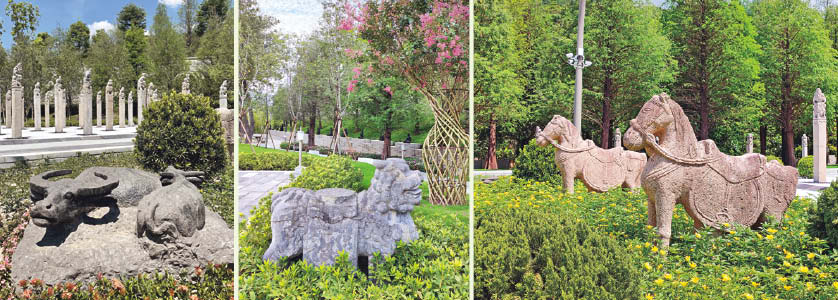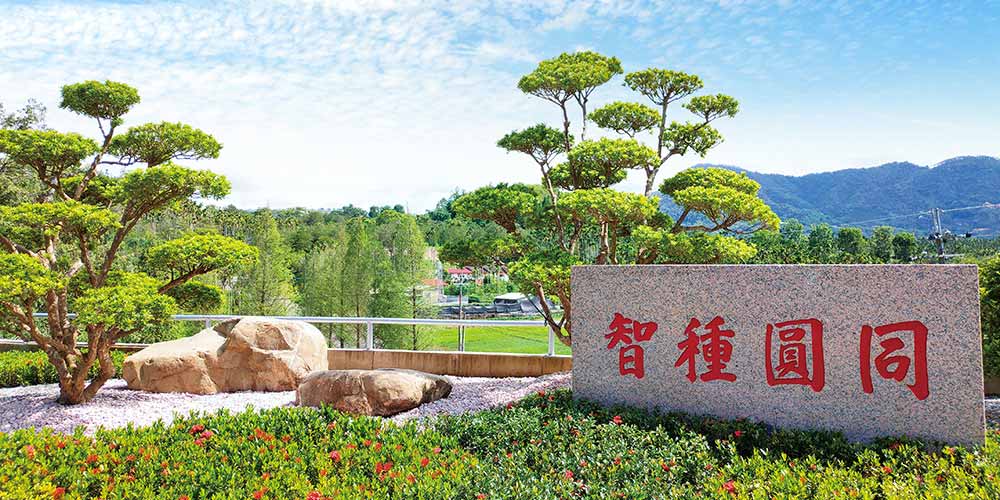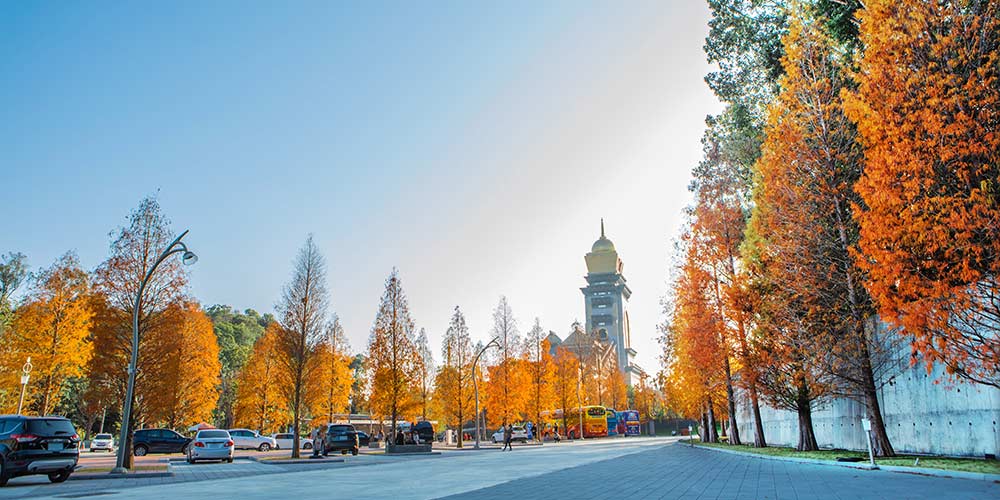
Miaojue is the awareness perfect beyond all conception that a bodhisattva achieves upon completing the Mahayana path, the fruit of ultimate buddhahood. It embodies the ultimate goal of cultivating the Bodhisattva Way and making a compassionate vow to benefit all beings, which inspired the name of Miaojue Park. As the first stop on the pilgrimage to Chung Tai, the park is a gateway to the Dharma, where its architecture, garden, and Buddhist artwork invite visitors to bring awareness back to their minds and enter the pure land, the world of Chung Tai.
Rooted in human life, compassion for all beings
By seamlessly integrating parking space with a cultured garden, Miaojue Park expresses the Dharma through function and aesthetics, creating a haven for visitors to rest their bodies and calm their minds. From spacious roads to well-defined pedestrian walkways, every aspect of the park’s design reflects the bodhisattva’s commitment to protect, shelter, and bring joy to sentient beings.
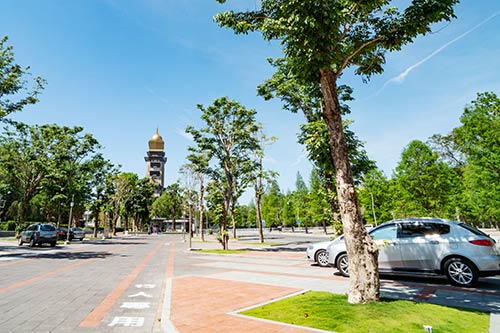
Pedestrian-only walkways keep visitors safe. The trees on the raised islands provide shade for both people and cars.
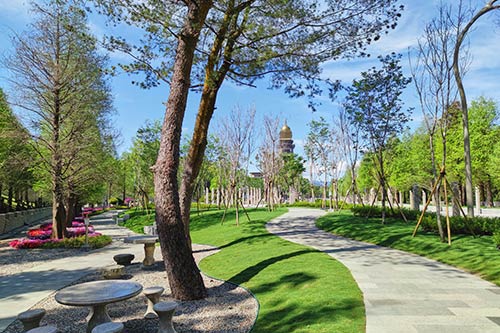
Stone benches give visitors a cool place to sit and rest.
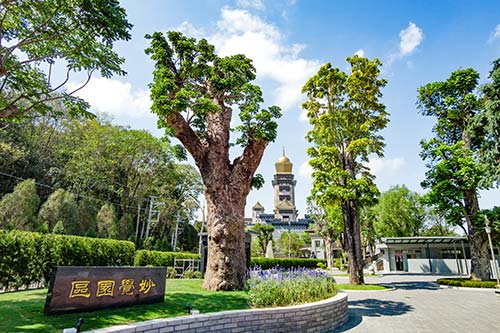
Clean and well-lit public bathrooms are located next to the pedestrian bridge, shaded by tall trees.
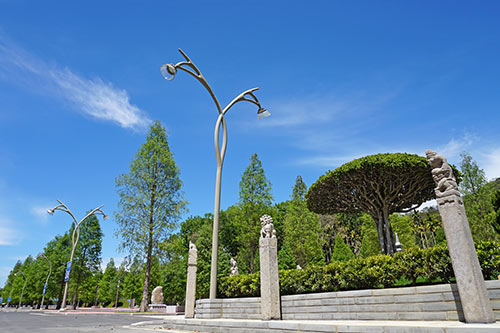
Lampposts inspired by the motto “Chung Tai holds up a flower and sentient beings smile,” light up the roads and walkways.
Forest grove, monastic order
In the heart of the park lies a verdant grove of North American cypress, Honduras mahogany, Burmese rosewood, and other trees, evoking the Chinese tradition of Chan monasteries nestled in secluded mountain forests. They were known as conglin or “dense groves.” According to the virtuous ancients, “Cong means the grass is kempt; lin, the trees are orderly. Hence, conglin is a place governed by principle.” The trees in Miaojue Park reflect Chun Tai’s monastic heritage and its commitment to upholding the tenets of Buddhadharma as a Chan monastery, a sanctuary for enlightenment.
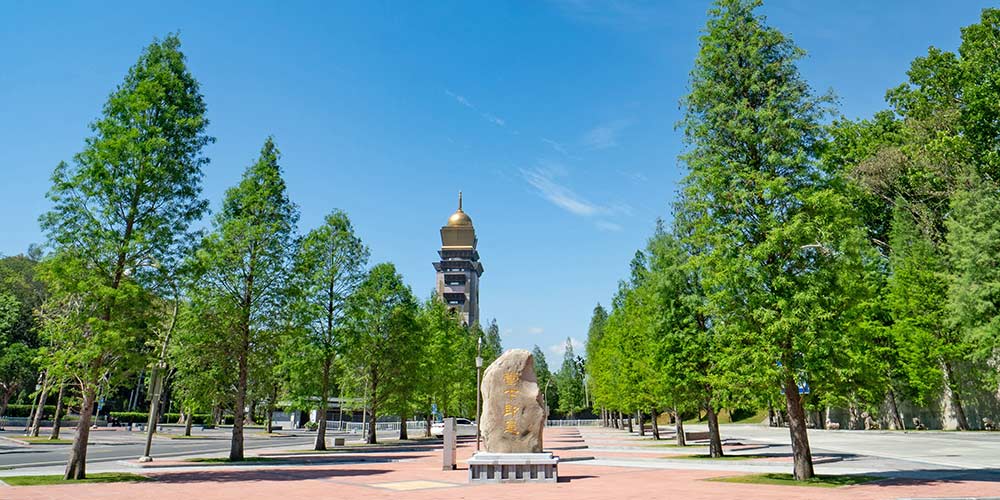
The profound realization of Chan
Standing before the park is a stele inscribed with Dharma words: “The present moment is it” and “Reflect inward with awareness, the inconceivable is by your side.” These words express the truths that must be realized in cultivation: the mind in the present moment is the one who can truly appreciate the quiet serenity of Miaojue Park. It is up to us to reflect inward with awareness and return to this very mind.
1
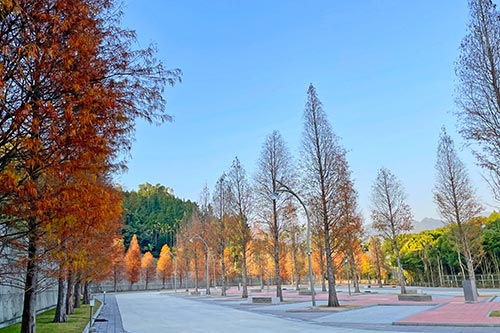
2
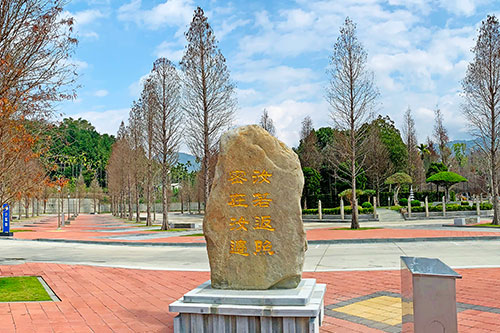
3
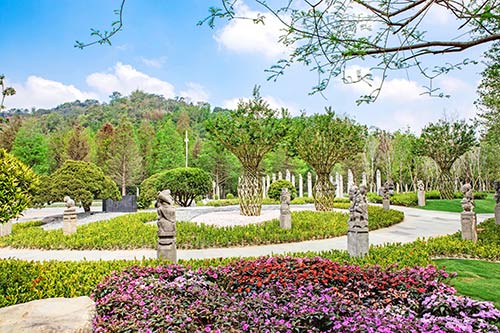
4
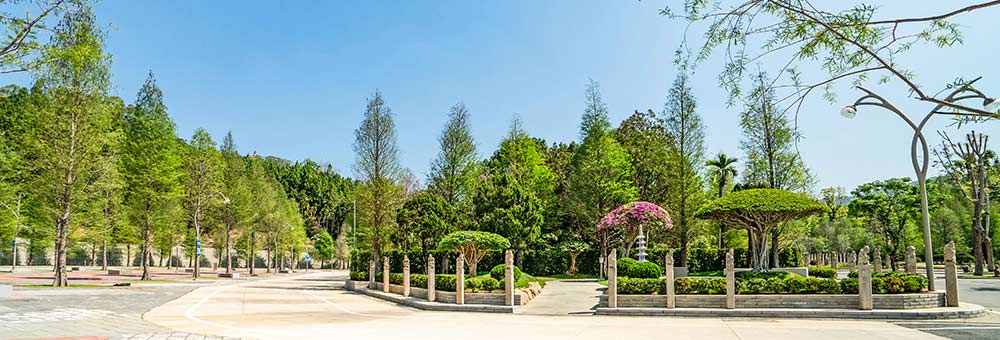
5
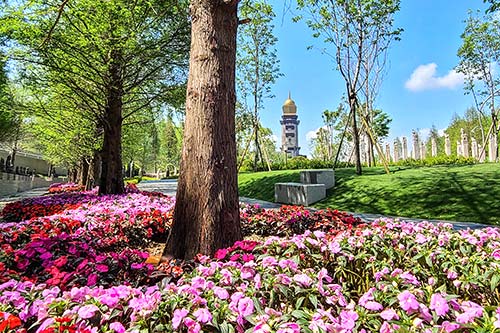
6
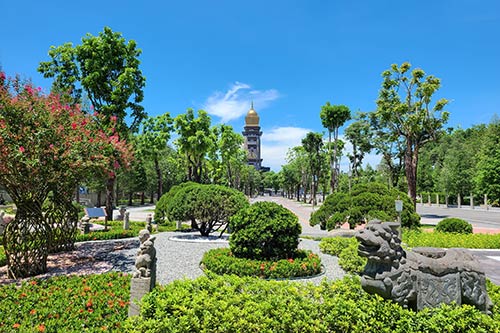
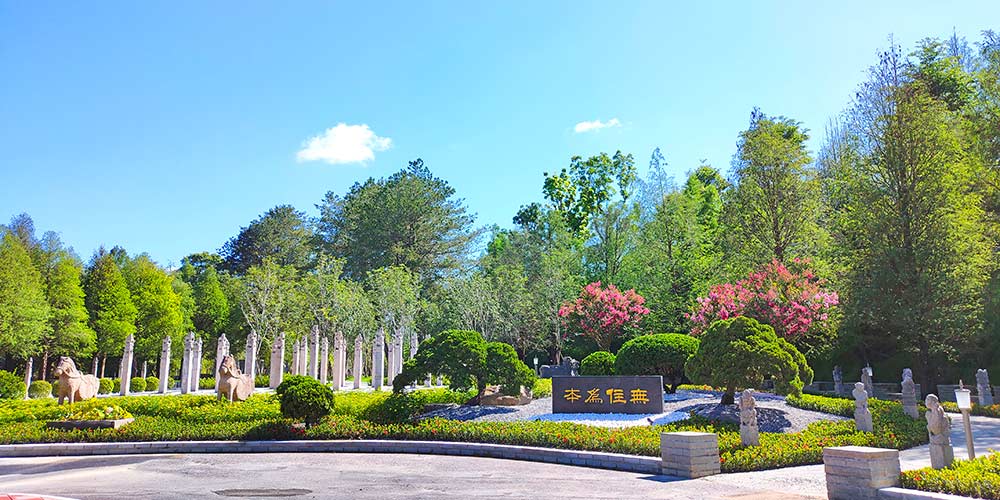
Home to Dharma inscriptions, stone buddhas, pagodas, Chinese hitching posts, and animal statues, Miaojue Park is a microcosm of the pure land, rich in Buddhist culture and spirit.
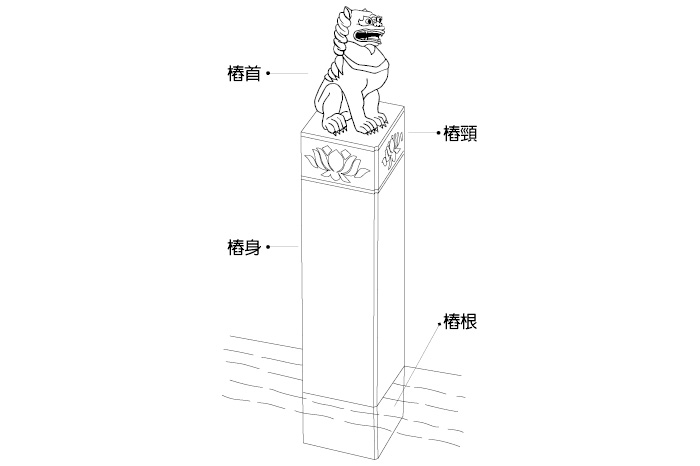
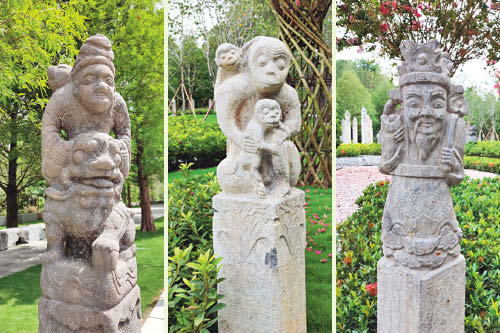
Stone statues in a pure land
As soon as one enters Miaojue Park, the ubiquitous hitching posts lining the roads and garden paths immediately catch the eye. These stoneworks, adorned with intricate carvings of people and animals, were once used by horsemen to tether their mounts. For ordinary people, they symbolize prosperity, peace, and blessings; but from a Buddhist perspective, they are subtle reminders to “hitch” our monkey minds and return to a state of intrinsic purity. The sutras teach, “One with a pure mind who regularly shows reverence to all buddhas will attain the greatest blessing.” The pure land evoked by Miaojue Park is not only a physical space, but also a state of mind, wherein one attains the greatest blessing.
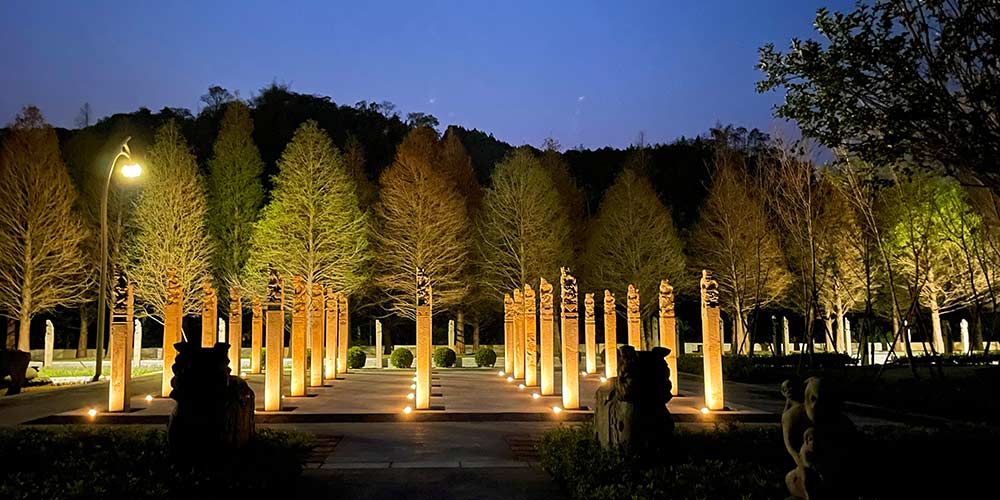
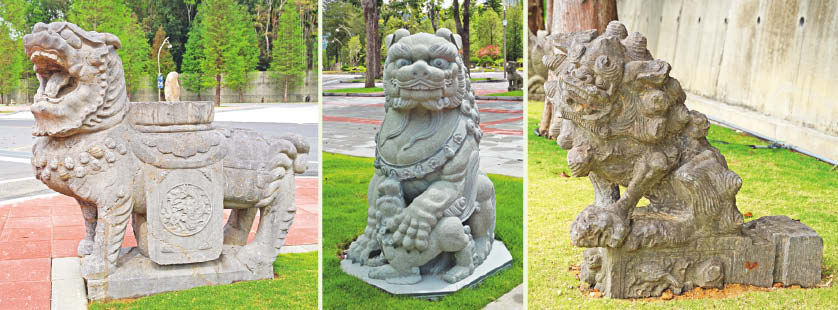
Miaojue Park’s collection of animal statues holds deep cultural and symbolic significance; however, it is the lion that is most closely associated with Buddhadharma. The Buddha is often referred to as “lion among men”, with his teachings resounding like a “lion’s roar” across the ten directions, purifying the minds of sentient beings. As such, the lion statues in Miaojue Park represent teaching the Dharma, acquiring wisdom, and protecting the teaching.
Teaching through form to reach the mind
Quietly seated on the park’s retaining walls are several stone buddha statues, carved in the Southeast Asian style. Greeting visitors with a visage of effortless composure, stillness, and purity, these statues encourage them to bring forth the inner light of awareness, illuminate the darkness of ignorance, and discover that the pure land begins with the pure mind.
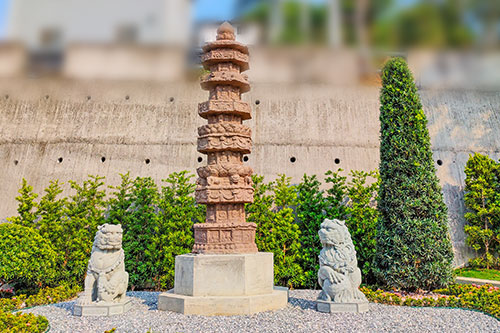
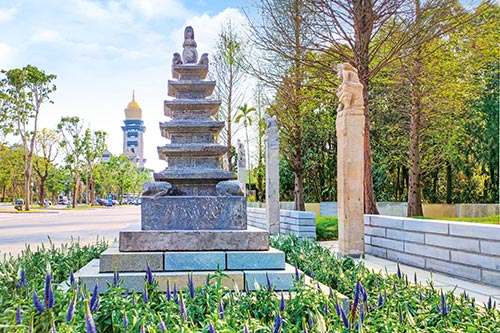
Pagodas symbolize the Dharma body. Seeing one is to create affinity with all buddhas.
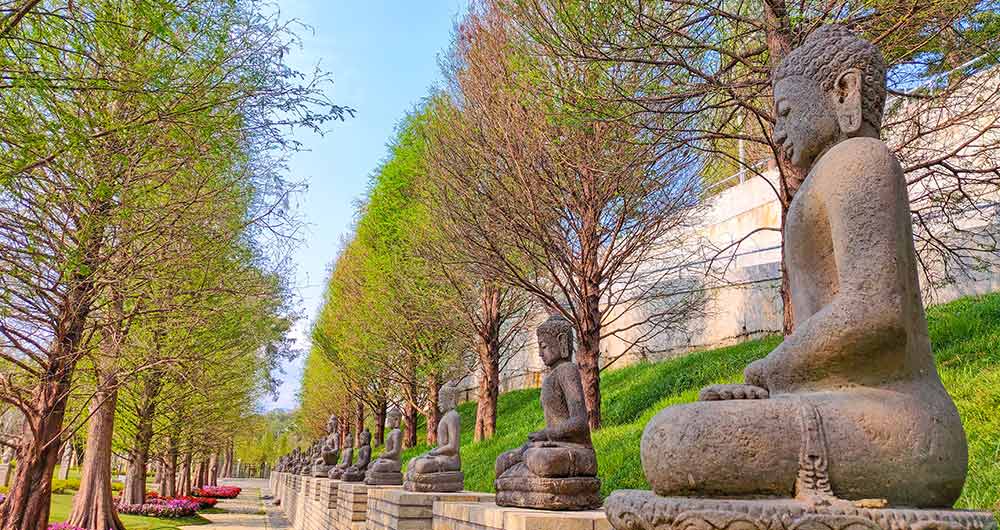
The buddha statues and cypress grove evoke the pure land.
To see a pagoda is to see the buddha
The Buddhist pagodas in Miaojue Park originate from India, where stupas first appeared, built as hemispherical monuments to house the Buddha’s relics after his parinirvana. As Buddhism was transmitted to China, stupa design became influenced by local architecture and evolved into a distinct structure—the pagoda. Miaojue Park has two stone pagodas based on the tiered-tower design of their full-size counterparts. One is octagonal, decorated with relief carvings depicting a buddha shrine on each side, and the other is square, with a stone lion guarding every corner.
Pagodas represent the buddha’s Dharma body: to see a pagoda is to see the buddha. They are placed in Miaojue Park for visitors to enjoy their architecture, plant virtuous roots, and create joyful affinity with the buddhas.
“The non-sentient speak the Dharma and the sentient listen,” Miaojue Park’s peaceful, orderly landscape is reminiscent of a buddha land, where visitors can cleanse their bodies and spirits, rejoice in the Dharma, and embark on the path towards enlightenment.
